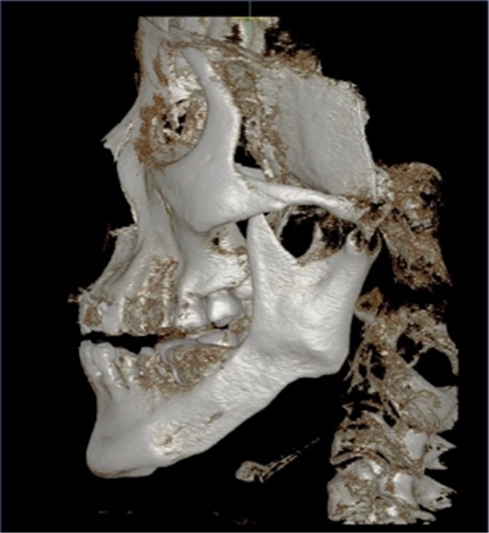
Dr. Jung-whan Baek (H Plastic Surgery)
Several months passed and I was brought to the same problem that I first encountered in June 2012. Surgical facial contouring is a complicated procedure with a long learning curve. I also have to admit that my surgical skills improved with more hours spent in the operation room. I only wish that I could help junior doctors to avoid the trials and errors that most doctors have to go through in the beginning of their practice.




Image 4. Patient who received surgical facial contouring.
This patient presented sensory loss of the right side of the mouth due to neural damage during right maxilla reduction. The left side nerve was not damaged but resected sides were asymmetrical and even had a concave outline. The resection was uneven at the tip of the chin, which was severe enough to be visible to the naked eye.
I had to find a new way to help this patient. I remembered performing a mock surgery using an RP model prior to a bimaxillary surgery during my days in medical school. I had also written a thesis on measuring the maxilla and surrounding soft tissues with 3D CT images. In 2013, I read a news article about 3D printing and started to learn more about it. In 2013, the US president Barack Obama touted 3D printing as a promising new industry.
In the US, OPM (Oxford Performance Materials) used PEKK (poly ether ketone ketone), an artificial bone substitute material, to 3D print a human cranial implant in 2013. It was successfully implanted in a patient. In Belgium, Materialise and Synthes were in the process of manufacturing a commercial human cranium using PEKK. They were also working on titanium human jaw bone replacement in collaboration with OBL.
In Korea, a 3D printed cranium model was used to treat a patient with nasal cavity cancer at Samsung Medical Center. Various other attempts were made to apply 3D printing to medicine but most were in the experimental phase or were used as an adjunct.
I tried to find a way to apply 3D printing technology to the above mentioned patients and came to devise three fabrication methods to produce customized implants. I also looked for the most practical materials and fabrication methods that could be executed immediately and looked for ways to apply them in clinical practice.
During this process, I was fortunate to receive valuable assistance and guidance from Dr. Byung-yoon Park who introduced me to RP modeling during my residence and Dr. Yong-wook Kim who convinced me of the feasibility of 3D imaging.
[Advertisement] Tulip(Skin Tightening & Lifting) – Manufacturer: DANIL SMC(www.danilsmc.com)
-To be continued-




















